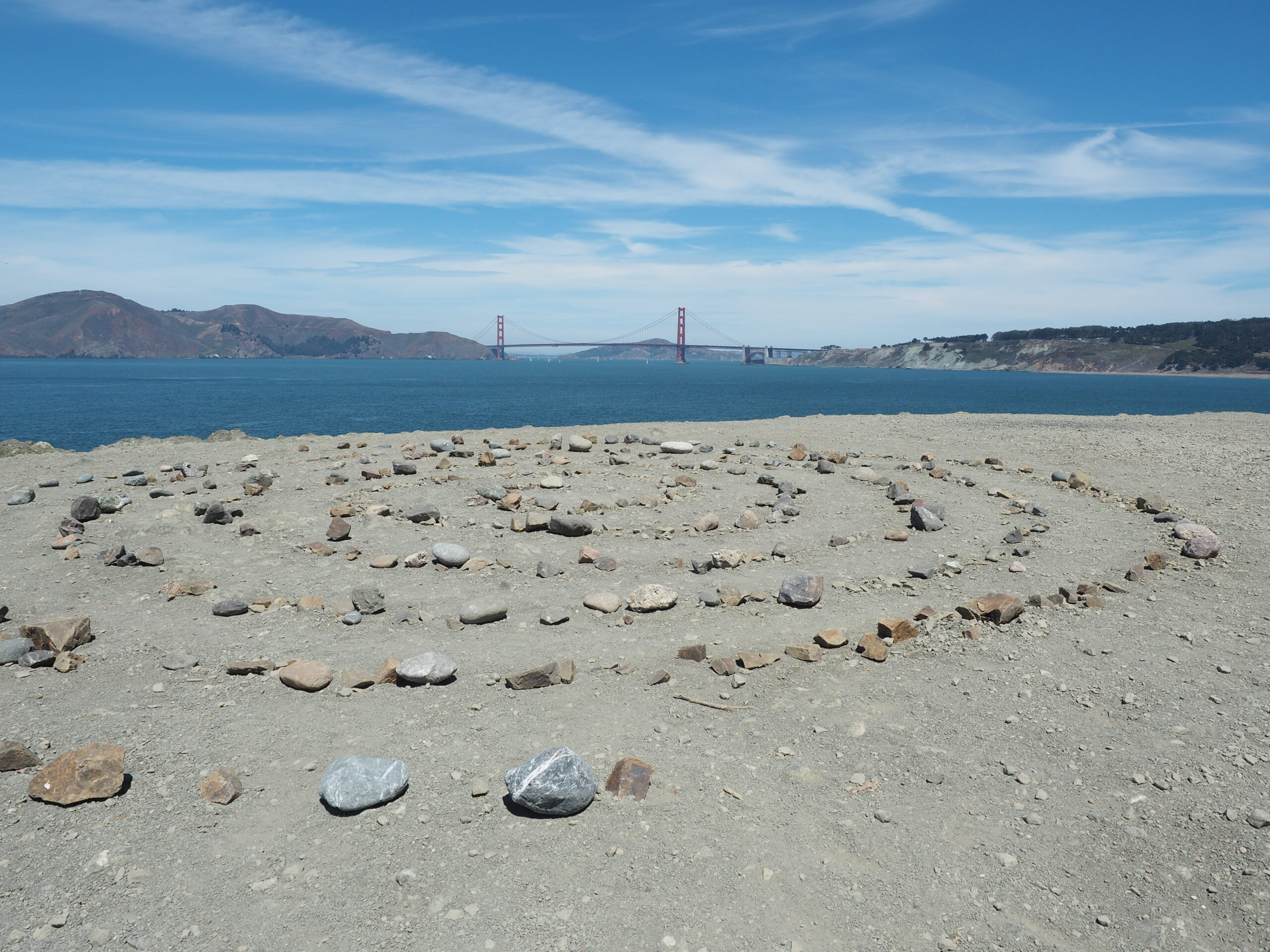It’s February 10th, one year since starting writing, a circle around the sun, and this is a post about circles. You almost can’t help but go in circles, home, away, and all around. Though life is more like spiraling than circling, all sorts of circles give some sense of knowing, of completing and of connecting, be it planetary, dramatic, musical, serendipitous or calamitous. We look for paths in life, lines to follow, that maybe even lead somewhere, that have moments along the way, and trajectories and climaxes and conclusions, where we are from, where we are and where we are going. We tell stories to ourselves.
How do you blaze a trail, how do you find a path? Do you take the usual path or are you constantly taking new and calculated or random turns? In the day? in life? Most paths and roads grow from wild places, like geography and animal paths and can be followed blindly or with awareness.
As kids, we bushwhacked our way around the mountain. Deer paths were everywhere and crawl-space tunnels of foliage. Many valleys to explore, and one way usually meant very steep up and the other very much down, so the terrain was familiar even when the place was new. To get lost inside familiarity, there’s a beautiful irony there.
The idea of circling something, in order to know it, is completely intuitive. We are always going to end up ‘home’, completing a circle. My life in the city is usually goal oriented, like a meal, or shopping. Other ways of inspiring a path exists, outside of purposeful improvisation or just getting lost. ‘fartlek‘, the Swedish inspired, and coined, is a running workout strategy that picks out random destinations in the moment, often based on terrain and situation, thus creating a leap frog affect to a workout. This was how I learned to play frisbee golf. Seeing your surroundings as a giant random golf course is a nice break from the grids. Conversely, in Japan, temple grounds have paths clearly marked as the ‘usual path’. This method seems closest to the data driven Google methods, and does make a lot of sense but feel a little unsatisfying. Dog’s choice dog walks are fun, and, as dogs know, food is always a good destination. Stars, maps, weather, hunger, a bathroom, or just plain curiosity, guides are everywhere.
Historically, circumambulation is a ritualistic practice. Devotion, concentration, focus, repetition, connection. Buddhists do it. Going in a circle can mean not having to think about where you are going. Large cirles too, but the practice gets more complicated there. The Tendai sect in Kyoto practices a large circumambulation of a ‘sacred’ mountain as a route to enlightenment and understanding, and Mahayana stupas containing relics of the buddha were circled and mentally penetrated by practitioners in much smaller circles.
Beyond a direct expression of devotion, it’s a way to connect, mentally and physically to a new place or a known place. When I visited Istanbul, I walked the perimeter of the old historic wall, through multiple ‘random’ neighborhoods and gave great visual context as well as an emotional idea of what life would be like in a walled city, and with enemies at the gates. I imagined battles, but saw neighborhoods nestled into its shadow. History or topography, there’s many ways to map a circle. Circles, point to point, or a big gps satellite drawn heart for your love, there’s many routes to paths.
There’s a story is about Gary Snyder when he recreated a zen circumambulation of a mountain (seen as sacred) with a handful of his beat friends, Allen Ginsberg, with a circumambulation of Mt. Tamalpais in the Bay Area.
